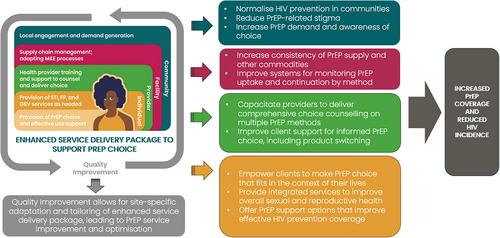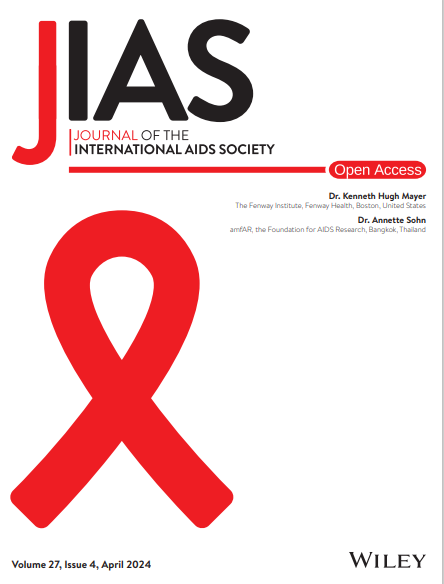PrEP choice in the real world: Results of a prospective cohort study describing uptake and use patterns of oral PrEP and the dapivirine vaginal ring among women in sub-Saharan Africa
Abstract
Introduction
HIV incidence remains high among women in Africa, especially adolescent girls and young women (AGYW), despite existing oral pre-exposure prophylaxis (PrEP) programmes. With expanding biomedical prevention options, understanding PrEP use patterns when women are offered choice can inform HIV prevention programming in Africa.
Methods
The CATALYST study offers informed PrEP choice through an enhanced service delivery package for women in 27 public health sites across Kenya, Lesotho, South Africa, Uganda, and Zimbabwe. Women attending sites who were HIV negative and interested in learning about HIV prevention were eligible. We describe uptake and use among those offered choice between oral PrEP and the monthly dapivirine ring from May 2023 through July 2024, explore factors associated with method choice using logistic regression, describe reasons for choice and assess time until PrEP discontinuation using survival analysis.
Results
Of 3967 participants, 44.9% were AGYW (15−24 years), 25.5% were sex workers, and 12.2% and 8.7% were breastfeeding and/or pregnant, respectively. At enrolment, 66.2% chose oral PrEP, 29.9% chose the dapivirine ring and 3.5% chose no method. Common reasons for choosing oral PrEP were ease of use (58.6%) and efficacy (31.7%); the ring was chosen due to ease of use (56.9%) and not needing to swallow pills (53.0%). In multivariable analysis, participants ≤ 24 years (p = 0.007) and participants who were pregnant (p = 0.002) or breastfeeding (p < 0.001) had lower odds of choosing the ring. Month 1 return was 32.7% for oral PrEP and 55.2% for the ring. Ring users reported higher adherence as compared to oral PrEP users (p < 0.001). Of participants returning for ≥ 1 PrEP refills, 12.1% switched methods at least once. Median time until PrEP discontinuation was 95 days (95% CI: 91, 110) for those choosing oral PrEP at enrolment and 169 days (95% CI: 139, 190) for those choosing the ring. Risk of discontinuation was greater for participants choosing oral PrEP at enrolment (p < 0.001) and those ≤ 24 years (p < 0.001), PrEP naïve at enrolment (p < 0.001) or not currently using contraception (p = 0.03).
Conclusions
We demonstrated that women took advantage of PrEP choice. PrEP use varied by product, with 1 month return and method continuation higher for the ring. AGYW had a greater risk of discontinuing either method, suggesting more support is needed.


 求助内容:
求助内容: 应助结果提醒方式:
应助结果提醒方式:


